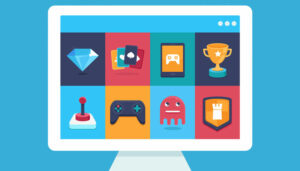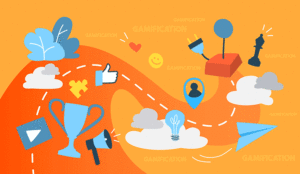Melissa Cowdry at Odigo explains that there’s a right way and a wrong way to employ gamification for contact centre agents.
Gamification is a hot topic in the world right now. It uses game design techniques and mechanics to steer participants towards certain goals by reinforcing actions or behaviours with rewards.
For your contact centre, employing games is an energising way to get agents to meet specific time-based metrics, such as reducing average handling time (AHT) or improving first call resolution (FCR) rate.
Using gamification the right way keeps agents in the moment and focused on the daily, weekly or monthly goals that agents and teams need to achieve.
The wrong way makes short-term goals the main focus at the expense of longer-term development. While immediate objectives and career development are not mutually exclusive, all too often contact centres place sole emphasis on the former.
However, the right technology can play a part both in contact centre gamification and in developing agents professionally.
There Are Multiple Approaches to Gamification for Contact Centres
Games encourage friendly competition between teams, and even among agents on the same team. Contact centre gamification technologies can be implemented within CCaaS solutions to give agents a fun way to track their progress from their dashboard.
These take the form of leaderboards, which show where agents or teams stand in relation to each other when tracking a given metric. Badges are also common to contact centre gamification, giving agents a visual component to charting progress on team and individual goals.
Gamification for contact centres can also be home-brewed as well, using more analog forms of engagement. Leaderboards can take the physical form of posters or whiteboards displayed in prominent places, based on information from supervisor dashboards customised to critical brand metrics.
This also allows for customisation of games to agent-specific interests. For example, is the majority of one team car racing enthusiasts? Design the leaderboard to look like a race-track. Even better — encourage agents to design their own “car” out of paper to mark their progress around the “track” of the leaderboard.
In both cases, visual appeals to agent interests contribute to agent experience by making them feel seen and heard on a personal level, in addition to the fun of the game.
Make the Games Worth It
The key to making contact centre gamification thrive is rewarding agents properly for achieving goals. Things like gift cards allow agents to treat themselves when their personal circumstances otherwise might not let them.
With that said, employees always respond well to rewards that value their time and finances, for example paycheck bonuses and paid days off in exchange for meeting more significant goals.
Rewards can also be more holistically driven like those that feed into job satisfaction by contributing toward professional development.
Prizes such as additional training are a good start. Expanded responsibilities for agents also help motivate agents to develop their skills, see the larger mission in a contact centre’s work and more clearly understand their place in it.
For example, make trusted senior agents “performance ambassadors” who can attend training and share findings that help everyone link gamification to best practices. And yes, pay raises and promotions should be considered for consistent high performance.
To maintain the legitimacy of customer service work as a viable career path, long-term rewards must be considered in an agent’s development plan.
Gamification for Contact Centre Agents in the Short-Term, Development in the Long Run
Contact centre gamification is a great way to break up the monotony of the workday and keep agents engaged on the goals at hand. It is not, however, meant to be a substitute for an agent development plan.
The drive for short-term goals (such as reducing AHT) and long-term endeavours like professional development should not be thought of as interchangeable. Long-term development plans should be in place for agents who consistently rise to the occasion on the contact centre floor.
Contact centre gamification without meaningful development is frustrating, and agents who feel directionless in their careers know it all too well.
Using gamification to make contact centres more efficient solely from a metrics standpoint devalues the people skills that agents bring to their position, leading them to look elsewhere.
That feeds into another crucial issue — contact centre turnover, which could run as high as 80% annually depending on the vertical. Setting a long-term career path has been cited as a means of fighting agent attrition, which consistently plagues contact centres the world over.
There’s no reason for the pursuit of short-term goals at the expense of long-term development to continue.
New technologies, such as cloud-based contact centre platforms, not only provide new possibilities for contact centre gamification, but they give agents practical training and experience on an evolving technology, giving you a leg up in the development game. The rest of the agent development plan, however, is up to the manager.
CCaaS Technology Helps Close the Gap
Even though it’s ideal to serve as many customers as possible, brands work to satisfy customers not numbers.
Metrics aren’t everything, though the pressure to optimise them is real, which is where a CCaaS solution can help pursue the twin goals of meeting metrics and developing agents.
The result? Customer satisfaction.
A highly personalised omnichannel bot can assist agents on simple queries across messaging, chat and voice channels, using natural language understanding (NLU) to respond with relevant information in a natural way.
Moreover, NLU helps qualify calls, routing them with more accuracy to agents who can cement the lessons learnt in training. Empathy-imbued CX and optimisation for AHT, FCR and other metrics.
Author: Guest Author
Published On: 18th Apr 2023
Read more about - Guest Blogs, Odigo





































